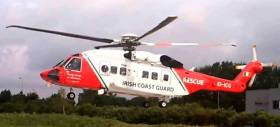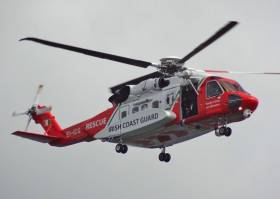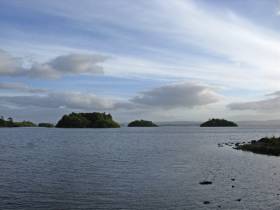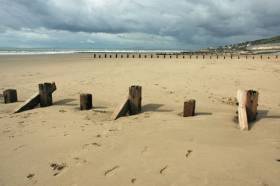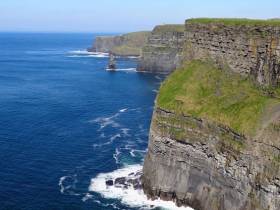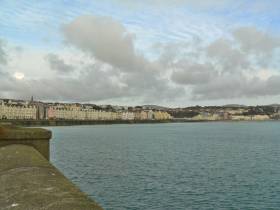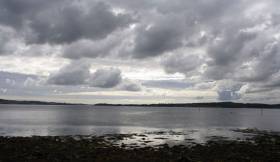Displaying items by tag: missing
Search Resumes For Swimmer Missing Off Bundoran
#Missing - The search resumed at first light this morning (Wednesday 24 August) for a swimmer reported missing off Bundoran in Co Donegal yesterday evening.
BreakingNews.ie reports that the man got into difficulty while swimming at Tullan Strand.
The alarm was raised by a beachgoer in the adjacent car park after a group of swimmers called for help, according to RTÉ News.
Bundoran RNLI and the Irish Coast Guard's Sligo-based helicopter Rescue 118 are involved in the search that was suspended overnight.
Search Ongoing For Fisherman Off West Cork
#Missing - The search resumed off West Cork this morning (Tuesday 16 August) for a man in his 60s who failed to return to Schull from a solo fishing trip yesterday evening, as The Irish Times reports.
RNLI lifeboats from Baltimore were joined by local fishermen and the Irish Coast Guard's Shannon-based helicopter Rescue 115 to sweep the area where the man's punt was found in Long Island Bay around 8.30pm.
The Irish Times has more on the story HERE.
Body Recovered In Search For Missing Lough Corrib Fisherman
#Missing - Galway Bay FM reports that a body was recovered from the water near Oughterard Pier in the search for a fisherman missing in Lough Corrib yesterday afternoon (Saturday 13 August).
As previously covered on Afloat.ie, the search began on Friday morning after a fishing boat belonging to a local man in his 50s was found unoccupied in the Co Galway lake.
Search Resumes For Missing Fisherman In Lough Corrib
#Missing - The search resumed this morning for a fisherman missing in Lough Corrib near Oughterard in Co Galway.
As RTÉ News reports, emergency services were joined by local fisherman to begin the search after a fishing boat was found yesterday morning (Friday 12 August).
It's understood that the missing individual is a 50-year-old man from the locality, according to Independent.ie.
#Missing - BBC News reports that the search has resumed for two teenagers missing in the Irish Sea off north-west Wales since yesterday afternoon (Sunday 7 August).
The two boys, ages 14 and 15, had got into difficulty while swimming at Barmouth Beach in Cardigan Bay and were separated from their group, comprising members of the Somali and Yemeni communities in Birmingham.
It's understood one member of the group attempted a rescue but was unsuccessful.
In a separate incident, HM Coastguard and RNLI lifeboats from Cardigan and New Quay launched to reports that a man had been swept off rocks at Mwnt on the southern side of Cardigan Bay.
It was reported that two men had been walking when they were cut off by the tide and one of them fell into the sea from rocks.
#BlackLough - The body of a woman has been recovered from Dungannon's Black Lough in the search for a missing person, as the Belfast Telegraph reports.
Planned searches were ongoing in and around the Dungannon area in Co Tyrone yesterday morning (Tuesday 5 July) when the grim discovery was made around 10.30am.
The PSNI is investigating the circumstances surrounding the death of the woman, named locally as 68-year-old Hilda Kyle from Moygashel. The Belfast Telegraph has more HERE.
#CliffsofMoher - Searches continued this week for a man thought to have fallen from the Cliffs of Moher at the weekend, according to the Irish Mirror.
Coastguard teams went into action last Friday (13 May) when staff at the area's visitor centre noticed a car parked overnight.
It's believed that the missing man is in his 60s, from Dublin and a regular pundit on TV and radio.
In other news, a man was hospitalised on Sunday (May 15) after attempting to swim to Dalkey Island.
As The Irish Times reports, the man in his 40s was recovered from Dalkey Sound by the Dublin Coast Guard and treated for mild hypothermia.
Open Verdict On Death Of Polish Woman Recovered From Irish Sea
#IrishSea - The inquest into the death of a Polish woman from Dublin whose body was recovered from the water off the Isle of Man last summer has recorded an open verdict, as BBC News reports.
Recording his findings at Douglas Courthouse earlier this month, coroner John Needham said 33-year-old company director Joanna Dabrowska had likely "spent a significant period" of "several weeks" in the Irish Sea before members of the public recovered her body in Douglas Bay on 5 July 2015.
Dabrowska has been renting a flat in Dublin on a career break after a stint in Germany when she was reported missing by her landlord in early June.
"Police enquiries have thrown no light on how, where and when Joanna's body entered the sea but there was no disease and no traumatic injuries to the skull," said Needham, adding that the date of her death would have been some time between 27 May and 25 June 2015.
BBC News has more on the story HERE.
Bodies Recovered From Galway Waters In Search For Missing Men
#Galway - BreakingNews.ie reports that post-mortems on two bodies recovered from Galway waters over the weekend are scheduled for today (Monday 18 April).
Gardaí have confirmed that the body of soldier Private Ben Garrett (21), who was missing since 31 March, was recovered from Galway Docks on Sunday morning (17 April).
Another body was found in Galway Bay on Saturday morning (16 April) in the search for Anthony Henehan, last seen entering the water at Wolfe Tone Bridge in Galway city on 10 March.
Missing Diver Found Safe In Strangford Lough
#Diving - The UK Coastguard received a call just after 4.10pm yesterday afternoon (9 April) from a member of public reporting that a diver had not surfaced as expected in Strangford Lough near Ringhaddy, Co Down
Coastguard rescue teams from Portaferry and Bangor, the Portaferry RNLI lifeboat, the PSNI helicopter and the Irish Coast Guard's Rescue 116 helicopter based at Dublin were all sent to the area for the search.
Luckily the diver was found on the shore by local residents shortly after the coastguard were altered.
The Irish Coast Guard helicopter landed, with assistance from the UK Coastguard rescue teams. The diver was checked over by the on-board paramedic and after advice from a specialist doctor the diver was given the all-clear and allowed to make his own way home.
Graham Edgar, senior maritime operations officer with Belfast Coastguard, said: “This is a great outcome for all involved, the other diver’s in the group did exactly the right thing, they called us as soon as they realised he was missing.
"Fortunately the diver was found safe and well. We would urge all divers, as this diver did, to let someone know where they are planning to dive, when they are planning to come back and if possible dive within a group.
"Also keep a close eye on the weather and sea conditions and always dive within your limits."



























